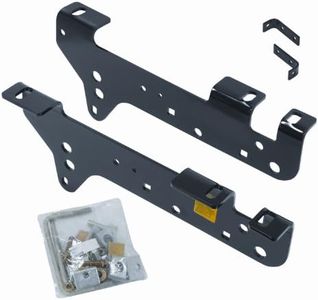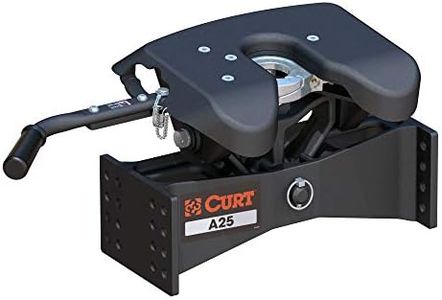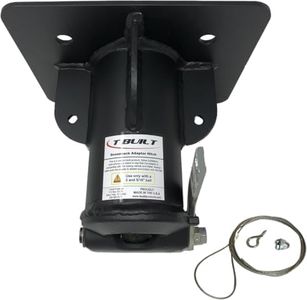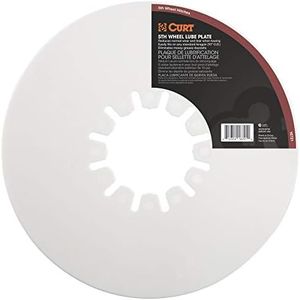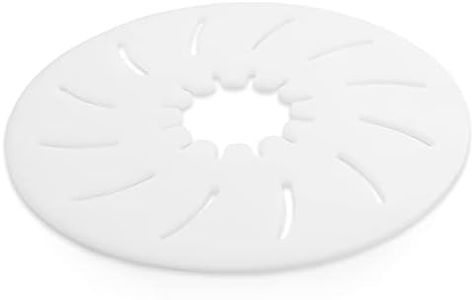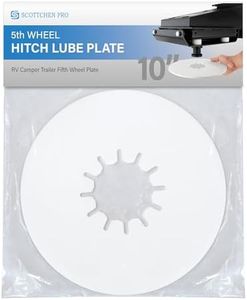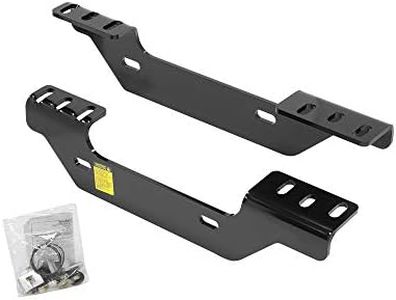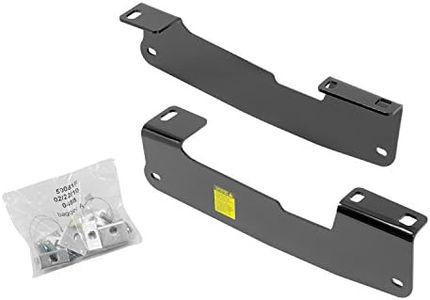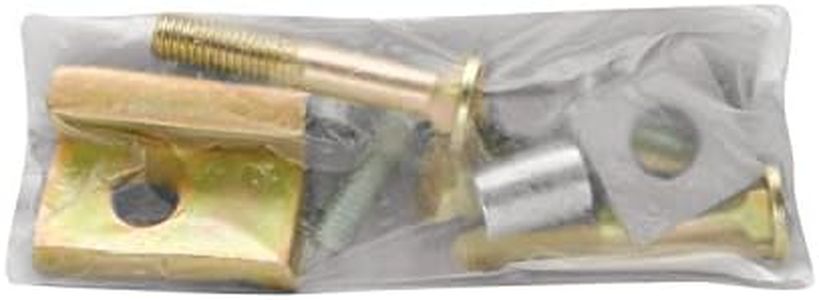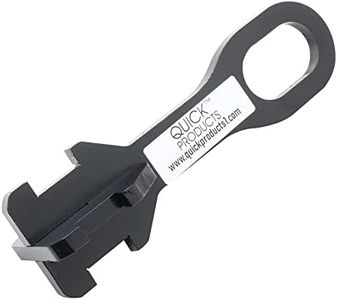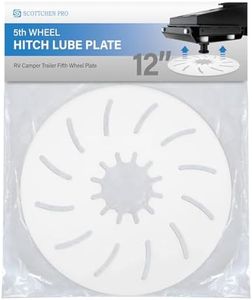We Use CookiesWe use cookies to enhance the security, performance,
functionality and for analytical and promotional activities. By continuing to browse this site you
are agreeing to our privacy policy
10 Best Fifth Wheel Hitches
From leading brands and best sellers available on the web.Buying Guide for the Best Fifth Wheel Hitches
Choosing the right fifth-wheel hitch is important for anyone planning to tow a large trailer, such as a camper or a heavy-duty cargo hauler. These hitches are designed to connect your trailer securely to the bed of a pickup truck, ensuring both safety and control during your journey. When shopping for a fifth-wheel hitch, it's essential to understand a few key specifications to match the hitch properly with your truck and towing needs. Knowing about these specs and how they relate to the kinds of trailers and trips you plan to take helps you make a confident and secure choice.Towing CapacityTowing capacity is the maximum weight the hitch can safely pull and is usually measured in pounds. This is crucial because using a hitch with a lower capacity than your trailer's weight can be dangerous and lead to equipment failure. Towing capacities for fifth-wheel hitches typically range from around 15,000 to over 30,000 pounds. If you have a lightweight trailer, a hitch at the lower end of this range will suit you. For heavier, residential-sized or fully-loaded trailers, look for higher capacities. Always verify both your vehicle's and trailer's actual weights to choose a hitch that meets or exceeds those numbers.
Mounting TypeMounting type refers to how the hitch is attached to your truck bed. There are generally fixed, sliding, and gooseneck adapter types. Fixed hitches stay in one place and are ideal for long-bed trucks where turning clearance isn't a big issue. Sliding hitches can move back and forth, providing extra space for short-bed trucks to prevent the trailer from hitting the truck cab during sharp turns. Gooseneck adapters convert a gooseneck connection to a fifth-wheel. Choose based on your truck bed length and how much turning clearance you need.
Hitch Height AdjustmentHitch height adjustment means the hitch can be set to different heights to align perfectly with the trailer's kingpin. This is important for a level towing experience, which improves safety and handling. Adjustment ranges are usually from about 14 to 18 inches. If your truck sits higher or lower than average, make sure the hitch can be adjusted to make your trailer tow level with your truck bed.
Jaw TypeJaw type refers to the mechanism that locks onto the trailer's kingpin. Common types include single jaw, dual jaw, and slide-bar hitches. Single and dual jaw hitches provide a tighter, quieter connection, which can mean a smoother ride. Slide-bar models are simpler and may cost less, but can allow more movement and noise. If you tow long distances or want a quieter, more stable connection, go for a dual or single jaw. For occasional use and lighter loads, slide-bar jaws can be enough.
Pivot RangePivot range is how much the hitch head tilts forward, backward, or side to side. This allows the hitch to flex as your truck and trailer move over bumps or uneven ground. Some hitches pivot only front to back, while others offer full 360-degree pivoting. If you often drive on uneven roads, campgrounds, or off-road, a greater pivot range provides smoother towing and less stress on your hitch and trailer.
Installation SystemInstallation system refers to the rails or base used to secure the hitch in your truck. Some need custom-fit brackets and drilling, while others use existing factory prep packages (drop-in). Custom-fit systems can offer more flexibility but take longer to install. Factory systems are easier but might not be compatible with every hitch. Selecting the right installation depends on your truck, how often you’ll remove the hitch, and how important a clean truck bed is to you.
Release MechanismThe release mechanism allows you to disconnect the trailer from the hitch. Some hitches have simple levers, while others use cams or handles for extra security and easier use. If you value ease of use, especially if you hitch up or unhook often, look for hitches advertised for simple, one-handed operation or visible engagement indicators.
